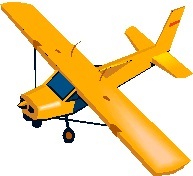History of Aerial Remote Sensing in Grand Canyon
|
|
Similar to 2021, 4-band multispectral imagery and photogrammetrically derived topography data were also previously acquired in 2002, 2005, 2009, and 2013. With each of those previous digital image acquisitions, GCMRC remote sensing staff developed and improved upon a methodology for producing a spatially seamless, spectrally consistent, and nearly cloud- and blemish-free image mosaic (Davis and others, 2012; Durning and others, 2016). That proven methodology will be used to develop an image mosaic from the 2021 acquisition.
An abbreviated history of aerial remote sensing of the Colorado River in Grand Canyon:
- The earliest air photos are black and white prints acquired from an airplane in 1935.
- The first set of air photos acquired after Glen Canyon Dam was completed are black and white prints from May 1965
- The first color and color-infrared air photos were acquired during flights in the 1980s
- The first digital multispectral images were acquired in the late-1990s
- The first acquisition similar to this year's overflight (high spatial resolution digital multispectral imagery and digital topography) occurred in May 2002, and then again in 2004, 2005, 2009, 2013, 2021 [2]
|
Aerial Remote Sensing Science for the Colorado River in Grand Canyon
|
|
GCMRC scientists have leveraged this rich archive of data to relate observations of landcover changes to physical, biological and hydrological processes (Figure 1). This remote sensing science helps to support resource management decisions in the iconic Grand Canyon and Colorado River. One example is a quantitative assessment of riparian vegetation changes that occurred as a function of dam operations and climate during the first five decades of the operations of Glen Canyon Dam. Other examples are mapping tamarisk and tamarisk beetle impacts throughout the Colorado River in Glen Canyon and Grand Canyon. For these tamarisk studies, imagery were incorporated from the Worldview 2 constellation satellite and, while the satellite imagery were helpful, they were not high resolution enough to replace the airborne multispectral imagery such as will be collected in the 2021 overflight. Changes in campsites area used by river runners and dunefields sourced by windblown river sand, which help to preserve archeological sites, are also evaluated with remote sensing. Using highly detailed vegetation and sand maps and predictive modelling, future riparian landcover changes are forecasted as a function of river flows owing to the planned operations of Glen Canyon Dam through 2036. [3]
|
|
Links
|
|
|
Projects
|
|
|
Presentations and Papers
|
|
|
TWP
|
2020 Overflight (TWP Pg260-271)
“The proposed schedule for this data collection mission is in May of 2021, during the first year of the FY2021-23 Triennial Work Plan (TWP). ”
“GCMRC will implement a remote sensing overflight to collect digital, multispectral imagery and topography of the Colorado River ecosystem between Glen Canyon Dam and Lake Mead in May 2021. To maintain consistency with previously collected digital, orthorectified aerial imagery acquired in 2002, 2009, and 2013 (Davis, 2012; Durning and others, 2016), the mission will be conducted during the same time of year (beginning on Memorial Day weekend and lasting for potentially one week or longer depending on weather) and adhere to much of the same data collection parameters and significant logistical requirements as used in preceding missions. “
“Specifications for the data acquisition necessitate that releases of the dam be held at a steady discharge of 8,000 ft3/s for the duration of the overflight mission. As such, the proposed 2021 overflight would be within the LTEMP flow regime, and we would request from and work with the Bureau of Reclamation and Western Area Power Administration to maintain the steady 8,000 ft3/s discharge for the duration of the data collection period. This flow adjustment is required to maintain consistency with imagery data sets collected in previous years and maximizes subaerial terrain that is not inundated by the river in the imagery. This will allow for highly accurate image classification of landcover in May 2021, and for image matching and change detection analysis with previous overflight datasets (see for example: Sankey and others, 2015, 2018a, c; Bedford and others, 2018b; Kasprak and others, 2018). “
2013 Overflight Wrap Up
The total cost of conducting the overflight including the collection and processing of the data was $525k (source: June 26, 2013 Webex meeting minutes)
"The 2013 image collection was a success. Totally cloud-free imagery for the entire corridor was collected in 6 days. Certain lines required reflights due to turbulence which produces image smears. Turbulence was the only delaying factor, especially in flight block G, because it is perpendicular to the prevailing high winds."
|
Other Stuff
|
|
The financial impact to WAPA from conducting the overflights were:
- 2013: $74,000
- 2021: $85,000 (est)
|
|
